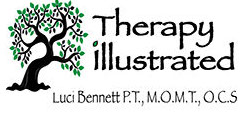


The Wrong Exercise at the Wrong Time
Z. is a 35 year old woman who was diagnosed with a large disc herniation one year after she had her second child. She has two little girls ages 2 and 3 years old. She was very active prior to having the second child. There were some complications during birth which resulted in a cesarean section. Immediately after the procedure, she developed a constant ache in her back that limited her activities.As her children grew, so did her lifting and carrying demands. She started having more intense pain that wouldn’t go away with rest. When her pain started going down the right leg, she decided to see her doctor. The doctor sent her for an MRI and diagnosed a disc herniation of L5-S1. He also gave her medications. She started to feel better, but she continued to have pain both in her back and leg every time she did any bending or lifting which was a lot with 2 babies.She tried seeing a chiropractor. The adjustments felt pretty good, but the pain in her back and leg persisted with the same activities. Sometimes she felt like she did at the beginning of her pain, especially when she had done a lot of housework.She went back to her doctor who recommended physical therapy. The therapist started her on some exercises. The exercises consisted of riding the bike and hip strengthening so that she could lift better. She felt a little better but still had the same pattern of increased pain with bending.A friend recommended a specialist in therapy. At this point, Z was not hopeful because it seemed like she had been through everything, and nothing had changed.The therapist evaluated her movement and noticed severe spasm of the right side back muscles as well as extreme weakness and poor coordination of her left abdominal/oblique muscles. She taught Z specific core strengthening exercises as well as stretches for the tightness of her back. Specific mobilizations were performed for soft tissue restrictions.Z’s persistent pain with bending was the result of a mix of muscle imbalances. She had restrictions in flexibility on one side and significant weakness of the other. This resulted in a poorly controlled spine with bending and loading activities.As Z improved both her flexibility and coordinative core strength, bending with good body mechanics became easier. The reduction in mechanical stress allowed her disc to heal, and her pain levels slowly improved.
